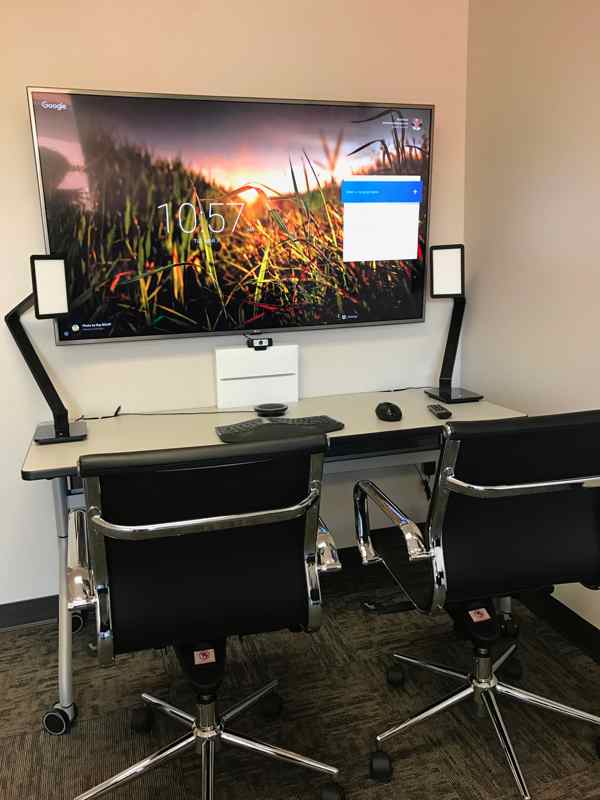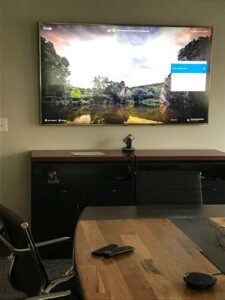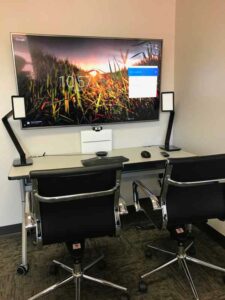Video Conferencing Best Practices


Google Hangouts swept through Kitware offices quickly for good reason. Aside from the major benefit of offering a more personal, face-to-face connection than audio-only calls, Hangouts provide good-enough quality from anywhere and from any device, and they are easy to set up and connect. Video conferencing is now easier and more prevalent; gone are the days of reserving special point-to-point hardware. As someone with who sits in on more meetings than most, I can say that Hangouts have had a major positive impact on my inter-office communication.
Now that we are all getting the hang of these devices, I’d like to share a few best practices and etiquette tips. These tips apply to video conferencing in general and not to Hangouts specifically. At a high level, I am saying something very simple: strive to look and sound as if you were in the same room with your audience. This may sound obvious, but you would be surprised how often it is ignored. If this advice is followed, you will benefit from many of the visual and social cues that are available in face-to-face conversation. If not, you risk frustrating your audience and missing the point of video conferencing.
Get in the frame. Do your best to get your body into the video frame. While audio-only connections are fine for phone calls, they create dissonance on a video call—it is hard to tell who is speaking, and we are inclined to behave as if only visible participants are in the room. Avoid lurking; steer the camera, or move your body so that you are visible.
Project your voice. Audio quality for video calls is okay but not great; you must compensate. This is difficult when you have both a local and remote audience, since we naturally calibrate our voices for the people in the room. So try this: imagine a person’s head floating over the microphone, and speak as much to that person as to others in the room. This is especially important in larger conference rooms and auditoriums. If someone mentions politely that they have a hard time hearing you, then that probably means that they are really straining to hear you. Make a major attempt to correct the situation by projecting your voice or improving your proximity to a microphone.
Don’t crunch. Kitware offers free snacks, including chips, which is an awesome perk. However, megaphone-amplifed crunching sounds during a discussion are not awesome. The same is true for crinkly bags, tapping something on the table, or typing on your laptop. Leave the chips in the break room. If you have to crinkle a bag, do it quickly, and move your laptop far away from a microphone if you need to type.
Mute early and often. If regular outgoing audio is not required, then mute yourself. Usually this is the case if someone is presenting and you are listening for significant periods of time. Just un-mute when you need to comment and then re-mute. This reduces audio feedback, and it also allows you to guiltlessly munch on chips and crinkle bags.
Consider hiding your video feed. If you are having a conversation, then don’t hide your video. However, consider hiding your video if you are an audience member and your body language does not add much to the conversation. This is especially true if you are pacing, stretching, eating, checking your email, picking your nose, or otherwise acting distracted.
Repeat questions and important cross-talk for remote audiences. Cross-talk is sometimes unavoidable, but realize that remote audiences are excluded from hearing it. Repeat crosstalk clearly if something is important or leads to a response from a presenter.
Don’t be a silhouette. Poor lighting reduces the quality of your video, and with it, the sense that you are meeting face-to-face. Consider reducing back lighting (e.g., close blinds) and increasing front lighting. Dedicated front lights make a huge difference in small spaces with poor lighting—we use them in several of our “Hangout” rooms at Kitware.

Align your camera. If your camera is roughly at eye level, then you will look like you are sitting across the table from someone. If your camera is pointing up or down at an extreme angle, then the visual cues are much harder to interpret, and you will loose much of the value that video conferencing provides. The same goes for the video screen placement. We have found that mounting the camera below the TV in the conference room generally works out well for a seated audience.
Do you have any video conferencing tips to share? What am I missing? I look forward to your comments.
Can you share the reference for these front lights?
I added a link in the caption of that image.
In my home office, I have significant back-lighting from a window. However, I just adjust the gain on the camera and set it to fixed so that I am exposed properly and the background is washed out.